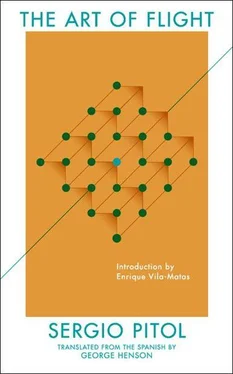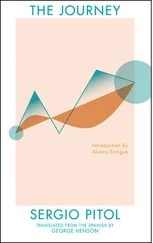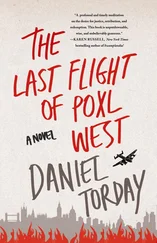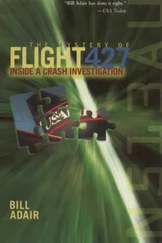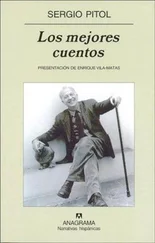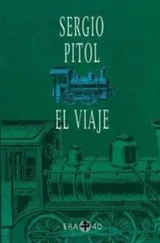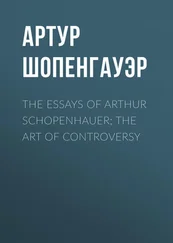Sergio Pitol - The Art of Flight
Здесь есть возможность читать онлайн «Sergio Pitol - The Art of Flight» весь текст электронной книги совершенно бесплатно (целиком полную версию без сокращений). В некоторых случаях можно слушать аудио, скачать через торрент в формате fb2 и присутствует краткое содержание. Год выпуска: 2015, Издательство: Deep Vellum, Жанр: Современная проза, на английском языке. Описание произведения, (предисловие) а так же отзывы посетителей доступны на портале библиотеки ЛибКат.
- Название:The Art of Flight
- Автор:
- Издательство:Deep Vellum
- Жанр:
- Год:2015
- ISBN:нет данных
- Рейтинг книги:5 / 5. Голосов: 1
-
Избранное:Добавить в избранное
- Отзывы:
-
Ваша оценка:
- 100
- 1
- 2
- 3
- 4
- 5
The Art of Flight: краткое содержание, описание и аннотация
Предлагаем к чтению аннотацию, описание, краткое содержание или предисловие (зависит от того, что написал сам автор книги «The Art of Flight»). Если вы не нашли необходимую информацию о книге — напишите в комментариях, мы постараемся отыскать её.
The first work in Pitol's "Trilogy of Memory," The Art of Flight imaginatively blends the genres of fiction and memoir in a Borgesian swirl of contemplation and mystery, expanding our understanding and appreciation of what literature can be and what it can do.
The Art of Flight — читать онлайн бесплатно полную книгу (весь текст) целиком
Ниже представлен текст книги, разбитый по страницам. Система сохранения места последней прочитанной страницы, позволяет с удобством читать онлайн бесплатно книгу «The Art of Flight», без необходимости каждый раз заново искать на чём Вы остановились. Поставьте закладку, и сможете в любой момент перейти на страницу, на которой закончили чтение.
Интервал:
Закладка:
The night of January 1, after dinner, very late, I said goodbye to the family; to my elderly great-aunts and uncles forever, as they would die shortly afterward. Early the next morning, my tío Noradino took me to Ostiglia, in whose tiny railway station we said goodbye. I boarded a beautiful toy train, a relic from the early days of the railway, I imagine: two small cars with seats lined with a thick threadbare velvet but still very elegant. I don’t believe that small narrow gauge train could have ever, not even in its prime, reached a heady speed, and by early 1962, many decades of work, wars, and bad times had rendered it nearly inoperable, and, with the mountains of snow that were covering the tracks that day, reduced it to an almost total inertia at times. The trip to Bologna took longer than expected. At the station in Ostiglia, when we said goodbye, my tío Noradino gave me a beautiful black leather wallet, full of enormous, meticulously folded bills. “To start off the year,” he said. I thanked him profusely for the unexpected gift that helped me not only to start the year but also for much longer. When I arrived in Bologna, the train on which I had reserved a seat had already departed, and I had to wait for another one that night. As they unloaded an automobile from a freight car, I tried very hard to bribe a railroad employee on that same platform to secure me a berth or, at least, a seat in first class; I was afraid to travel in a crowded second-class car with that much money in my pockets. People were returning to Rome and to the cities in the south in droves after the holidays; the platforms were packed. The young owner of the automobile that had been removed from the train asked me where I was going. I told him Rome, and he offered to take me to Siena, which meant taking me a good distance. He was on his way back from London, where he had attended an international theater festival. He had spent the New Year in Paris, taken the train to Bologna, where he had agreed to pick up the car that belonged to a family member. We talked about theater. He had finished his law degree, if I remember correctly, but he had not yet taken the bar. He possessed that good education characteristic of young people from well-to-do liberal families in which knowledge and pleasure are understood to be naturally integrated. He told me that the theater festival for the most part had been political, and that it was quite good. And that led us to talk for a while about politics. He was a socialist, a fervent admirer of Pietro Nenni, and was convinced that an intermediate force between the Christian Democrats and the Communist Party was necessary for Italy’s good political health. If the votes for the socialists and communists were combined, he said, the victory against the right would be convincing. In some areas — health, education, and international politics — the two parties voted frequently on the same side; but if that happened in every case, if they managed to merge into a single political organism, the socialists would run the risk of being absorbed, as had happened in Poland and Czechoslovakia, by the other party. As we approached Piacenza, my host informed me that we would be passing through the city center, which meant I would be able to see the Carthusian monastery by daylight and contemplate the works of Luca and Andrea della Robbia, which I had never seen. I remember the pleasure that the architectural structure of the certosa gave me, in which the color of the majolica was a cry of joy. I was completely ignorant insofar as applied arts, which I considered a trivial form of decoration. I owe no small part of my education to the many trips I took hitchhiking across Italy that year.
Between Pistoia and Siena, our conversation revolved primarily around two subjects: English literature and Italian art, in particular the primitive and the Renaissance painters. Before entering law school at a very young age, he had spent a year in London to learn the language and to experience living away from his family. During that time, and for several years before, my readings were preferably English. I made a comment about the Italian influence in English literature; not just beginning with the Romantics, who were fleeing the philistinism of their country in droves, but long before, since the Renaissance. Their debt to Bandello, for example, was noteworthy, and a considerable part of his work was set in Italian cities, and I cited in passing, since we were on our way to Siena, a commentary by Robert Greene about the city’s raucous university life, where he heard about practices that took place as a matter of routine and that would have been unimaginable in his country. My travel companion politely corrected the name, believing that I was citing Graham Greene, and I explained to him that no, I was referring to Robert Greene, a contemporary of Shakespeare to whom some scholars attributed the authorship or, at least, his collaboration in the writing of Titus Andronicus , who in his youth traveled throughout Italy and probably stopped for a time in Siena, which he cites as a compendium of all the excesses of the pagan world. The young law student became a bit confused. He changed the conversation to more pedestrian topics and suggested that upon our arrival in Siena I stay at the station; since the snow had begun to fall again and we were progressing at a cautious speed, we would arrive late at night; so I should check my bag and rest for a while in the waiting room. There wouldn’t be any problem because it was a station with little activity; then, at daybreak, I could go out and walk through the city since the colors of the murals and palaces were illuminated at that hour in such a way that only then would I be able to experience the hue that the entire world knows as sienna red in all its splendor. He suggested I visit the cathedral before leaving the city and the art museum to see the masterpieces of Sienese painting, those by Simone Martini, Ambrogio, and Pietro Lorenzetti, and especially those of Duccio di Buoninsegna, the founder of the Sienese school, and its most important proponent. He recommended that I write down the name so I wouldn’t forget it. I replied without pretension that I knew who he was, I had seen one of his pieces in the National Gallery in London, and that I knew the majority of his works in reproduction. And then I blurted out, also casually, some ideas by Berenson, whose books, which I had become acquainted with and studied in Mexico, I always carried with me during my trips to Italy. I talked about the sumptuousness of his greens and metallic golds, of the technique he had inherited from Bizancio that he managed to make them look more like bronze bas-reliefs than paintings. Duccio was extraordinary, I insisted, no one doubted it, but he lacked Giotto’s genius, whose work summarized those tactile values, which for Berenson were everything. And then there was another silence similar to the one that followed my comment about Robert Greene and his memories of Siena.
During the first months of my stay in Italy, I often experienced the feeling that people expected me, and all young Latin Americans, to possess a wealth of hardened, tropical views, different ways of thinking, myths, rebellions, and new strategies that would perhaps help redeem the Old World: the aggiornata representation of the beau savage with Borgesian memories and flashes of Che Guevara. It flattered and at the same time disappointed them to feel their culture being recognized. Those adventures through the Renaissance, the Enlightenment, and the avant-garde, after all, belonged to them. The claim seemed absurd to me, and sometimes I responded with provocations, but the European experience made me conscious, in spite of the sincerity of my intentions, that I ran the risk of learning everything solely from books, by rote, a self-indulgence that lacked the foundation that the necessary environment provides. It’s not that I was interested in submitting to any methodology, nor that I had academic ambitions; nothing interested me less than weakening the hedonistic nature of my readings, their purely casual organization. Nor was I going to ignore my almost innate disposition to seize everything the world had to offer. That was not the point; I intuitively understood that I needed to affirm the source of my own language and culture. I could recite a list of palaces and churches built by Palladio or Brunelleschi, and on the other hand, I possessed overwhelming gaps in the Mexican baroque, the truncated horizon of the Olmec and Maya, to cite just a few examples. I knew that I needed to capture that past in order to move freely in the world. It was the marrow needed to sustain the complex being I aspired to be. Without an affirmation of his language, the traveler loses the capacity to aspire to translate the universe; he will become a mere interpreter on the level of a tour guide.
Читать дальшеИнтервал:
Закладка:
Похожие книги на «The Art of Flight»
Представляем Вашему вниманию похожие книги на «The Art of Flight» списком для выбора. Мы отобрали схожую по названию и смыслу литературу в надежде предоставить читателям больше вариантов отыскать новые, интересные, ещё непрочитанные произведения.
Обсуждение, отзывы о книге «The Art of Flight» и просто собственные мнения читателей. Оставьте ваши комментарии, напишите, что Вы думаете о произведении, его смысле или главных героях. Укажите что конкретно понравилось, а что нет, и почему Вы так считаете.
